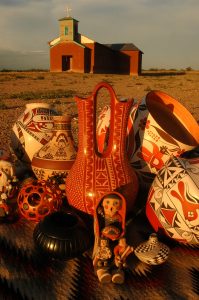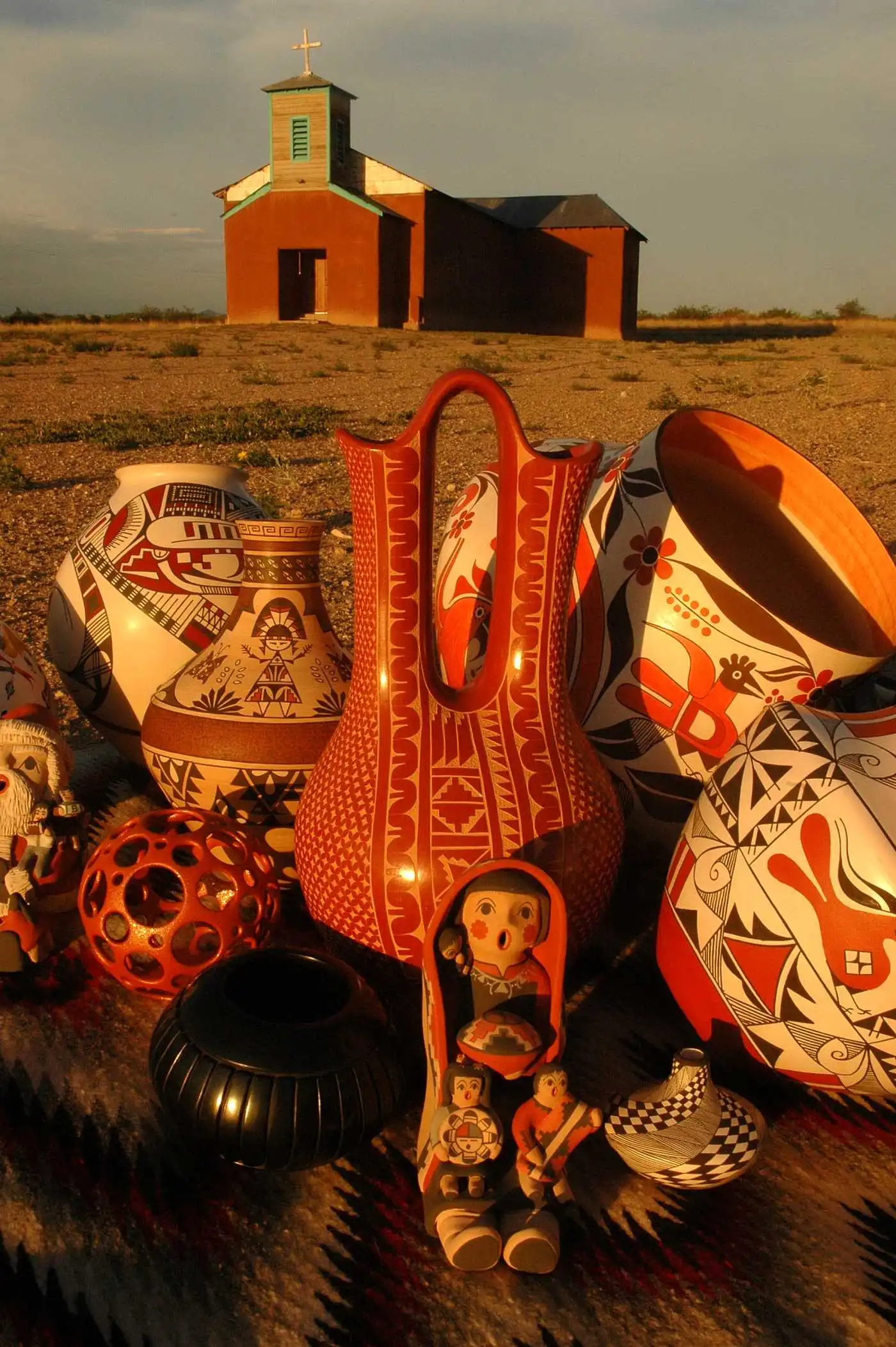Here at Palms, when we say “Native American Pottery,” we usually mean pottery made by the Pueblo Indians. Although other tribes practice the art, that of the Pueblos is best known. While one pueblo often adapts certain features from a neighbor, each has its distinctive characteristics. 
Each Pueblo generally uses clay found nearby to create pottery. The method of shaping the pots is the same; rolling the moist clay into a coil, shaping the coil by hand as desired, without the use of the potter’s wheel, and smoothing the surface with a stone or similar object. Methods of firing differ, as is shown by the color and finish of each pot. Each pueblo has its distinctive designs, many of them handed down or copied from those of prehistoric times.
It is wise re remember that most of Indian pottery will not hold water, unless a protective coating of shellac or the like is applied to the inside. While some kinds may be wiped off with a damp cloth, this should be done with caution; with Tesuque, never.
Following are some brief notes to aid in the identification of the various types:
Acoma: Light cream, almost white background. Designs are red or orange, often outlined in black. Has a slight “ring” when tapped slightly. Is said to be the only type of pottery that will hold water. Not widely distributed.
Hopi: Background light to deep reddish tan. Striking designs, flowing in character, reddish brown or black. Smooth eggshell finish.
San Juan: Red on tan polychrome marked by slight depressions, grooves or incising clear around the pot.
Jemez: Decorated after firing with intricate traditional patterns using commercial paints. Also make pottery in completely traditional ways with native materials and techniques.
Zia: Reddish brown on light tan. Often characterized by the “sky band,” a wide diagonal band, sometimes in a zigzag effect. A highly stylized bird is frequently used in the decoration.
Santa Clara/San Ildefonso: Each makes black on black and red on red. Sometimes the contrast is obtained by combining a matte with a glossy finish. Other times the designs I incised so the background stands out in relief. Decorations in contrasting colors are also used.
Taos/Picuris: Not much of either of these is made today. Rough finish, little ornamentation. Mostly grayish brown. Picuris may be distinguished by a sheen, due to mica in the clay used.
Tesuque: Rough surface, almost dusty looking. Decorated after firing with very bright show card (water base) colors, which will run if touched by even a drop of water.
Zuni: Few, if any Zuni women are making pottery today. Zuni pottery is distinguished by the use of water symbols-frogs, dragonflies, and the like. Sometimes the frogs, etc., are sculptured and then applied to the pot. A deer with heart line is often used.
Laguna/Santo Domingo/San Felipe/Isleta: Seldom seen except near these pueblos. Santo Domingo frequently shows a conventionalized flower, often in black and white, sometimes with other colors. Isleta somewhat resembles Acoma in colors used, but the designs are usually small and spaced rather than flowing together.
Cochiti: Known for pottery sculptures, figurines and recently, storytellers. Also known for vessels with clay animals attached to the usual shapes.



